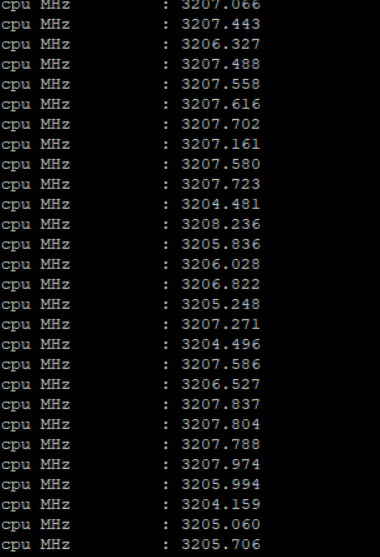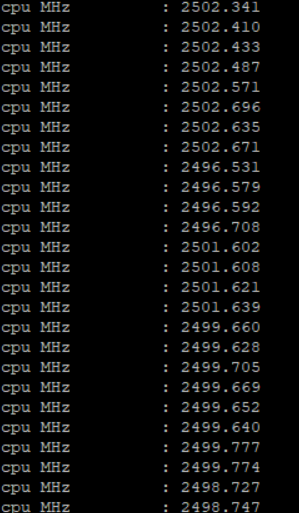AMD Rome Second Generation EPYC Review: 2x 64-core Benchmarked
by Johan De Gelas on August 7, 2019 7:00 PM ESTMulti-core SPEC CPU2006
For the record, we do not believe that the SPEC CPU "Rate" metric has much value for estimating server CPU performance. Most applications do not run lots of completely separate processes in parallel; there is at least some interaction between the threads. But since the benchmark below caused so much discussion, we wanted to satisfy the curiosity of our readers.
| 2P SPEC CPU2006 Estimates | ||||||
| Subtest | Xeon 8176 |
EPYC 7601 |
EPYC 7742 |
EPYC 7742 |
Zen2 vs Zen1 |
EPYC 7742 Vs Xeon |
| Cores | 56C | 64C | 128C | |||
| Frequency | 2.8 G | 2.7G | 2.5-3.2G | 2.5-3.2G | ||
| GCC | 7.4 | 7.4 | 7.4 | 8.3 | 7.4 | 7.4 |
| 400.perlbench | 1980 | 2020 | 4680 | 4820 | +132% | +136% |
| 401.bzip2 | 1120 | 1280 | 3220 | 3250 | +152% | +188% |
| 403.gcc | 1300 | 1400 | 3540 | 3540 | +153% | +172% |
| 429.mcf | 927 | 837 | 1540 | 1540 | +84% | +66% |
| 445.gobmk | 1500 | 1780 | 4160 | 4170 | +134% | +177% |
| 456.hmmer | 1580 | 1700 | 3320 | 6480 | +95% | +110% |
| 458.sjeng | 1570 | 1820 | 3860 | 3900 | +112% | +146% |
| 462.libquantum | 870 | 1060 | 1180 | 1180 | +11% | +36% |
| 464.h264ref | 2670 | 2680 | 6400 | 6400 | +139% | +140% |
| 471.omnetpp | 756 | 705 (*) | 1520 | 1510 | +116% | +101% |
| 473.astar | 976 | 1080 | 1550 | 1550 | +44% | +59% |
| 483.xalancbmk | 1310 | 1240 | 2870 | 2870 | +131% | +119% |
We repeat: the SPECint rate test is likely unrealistic. If you start up 112 to 256 instances, you create a massive bandwidth bottleneck, no synchronization is going on and there is a consistent CPU load of 100%, all of which is very unrealistic in most integer applications.
The SPECint rate estimate results emphasizes all the strengths of the new EPYC CPU: more cores, much higher bandwidth. And at the time it ignores one of smaller disadvantages: higher intercore latency. So this is really the ideal case for the EPYC processors.
Nevertheless, even if we take into account that AMD has an 45% memory bandwidth advantage and that Intel latest chip (8280) offers about 7 to 8% better performance, this is amazing. The SPECint rate numbers of the EPYC 7742 are - on average - simply twice as high as those of the best available socketed Intel Xeons.
Interestingly, we saw that most rate benchmarks ran at P1 clock or the highest p-state minus one. For example, this is what we saw when running libquantum:
While some benchmarks like h264ref were running at lower clocks.
The current server does not allow us to do accurate power measuring but if the AMD EPYC 7742 can stay within the 225W TDP while running integer workloads at all cores at 3.2 GHz, that would be pretty amazing. Long story short: the new EPYC 7742 seems to be able to sustain higher clocks than comparable Intel models while running integer workloads on all cores.












180 Comments
View All Comments
negusp - Wednesday, August 7, 2019 - link
hard F in the chat for intelpancakes - Wednesday, August 7, 2019 - link
F in chat for wallets of people running Windows serverazfacea - Wednesday, August 7, 2019 - link
windows server in 2019 LULdiehardmacfan - Wednesday, August 7, 2019 - link
on-prem Windows Server is probably at an all time high in 2019?azfacea - Thursday, August 8, 2019 - link
desperate for a comeback huh? cool hold your 10% tight and gloat about upcoming bfloat16diehardmacfan - Thursday, August 8, 2019 - link
Sorry, who is desperate for a comeback? Bring up a floating point format when called out on the ridiculous notion that Windows Server isn't still a large part of the marketplace? say whamkaibear - Thursday, August 8, 2019 - link
Just hopping in to say that I am an IT manager for a major employer in the UK and of our 1800 servers more than 80% of them are Windows... this is not a trend which I see changing any time soon.Deshi! - Thursday, August 8, 2019 - link
I work as an application engineer for a major global finance company that develops and hosts banking and e-commerce software used by banks and major shopping outlets. 90% of all our servers are either Linux or AIX mainly running websphere or standalone Java instances. We only have a handful of Windows servers, mainly for stuff like active directory and Outlook/ SharePoint. So yeah allot of it depends on the use case, but allot of the big boys do use Linux or AIX. It's cheaper and performs better for these use cases.cyberguyz - Thursday, August 8, 2019 - link
I guess we all have to ask ourselves, who are the customers that would benefit most from a 64-core, 128 gen 4 PCIe processors? SMB or huge customers that would shell out many millions of $$$ for their middleware & backend systems? @Deshi! I or one of my L3 colleagues an L3 engineer contacted by your global finance company to fix Websphere problems some years back ;)FreckledTrout - Thursday, August 8, 2019 - link
@cyberguz, Who would benefit from these high core servers? Any company running VM's so pretty much every large company. This goes doubly for cloud providers.